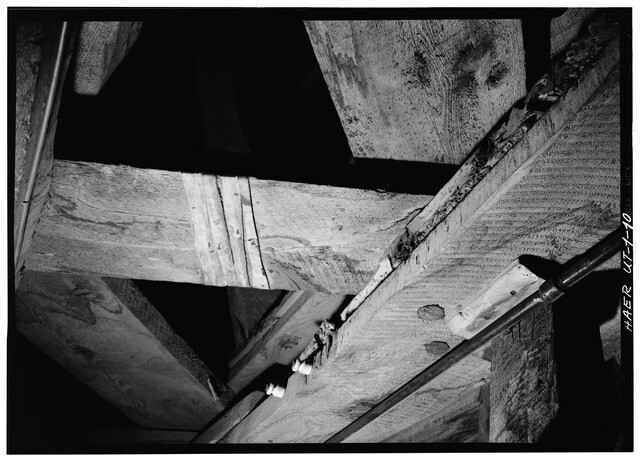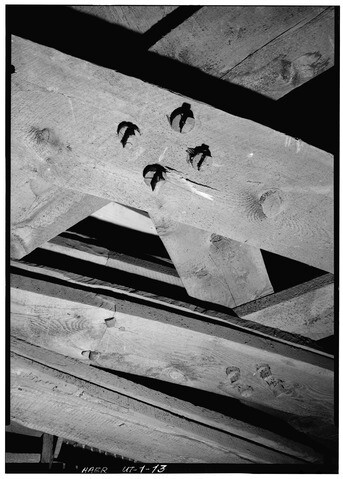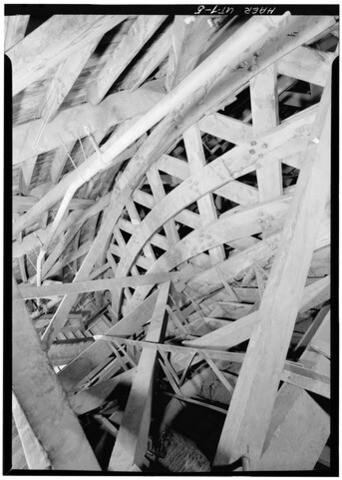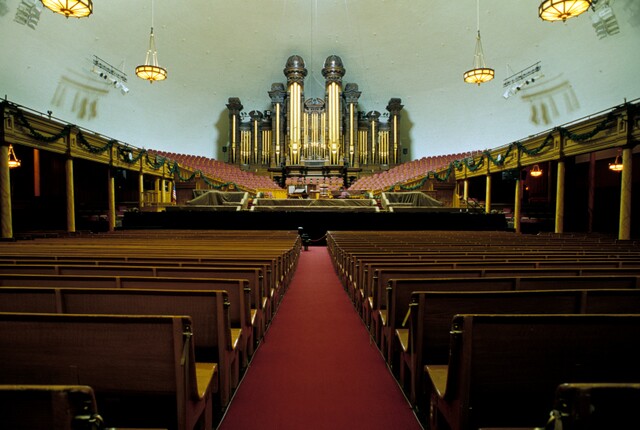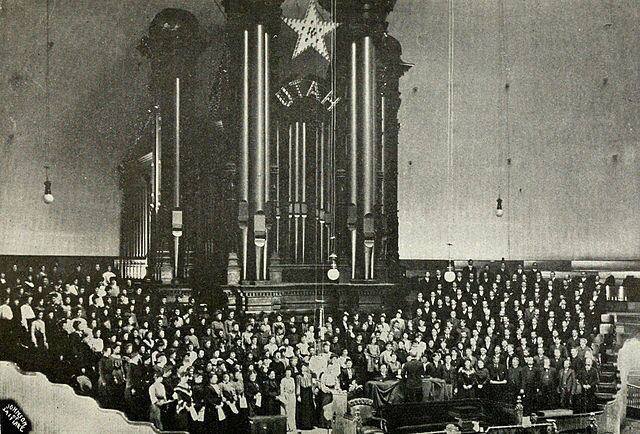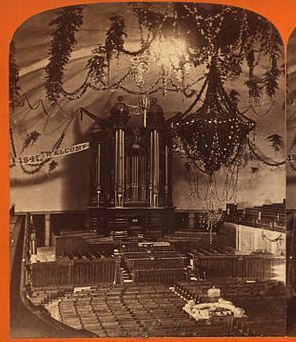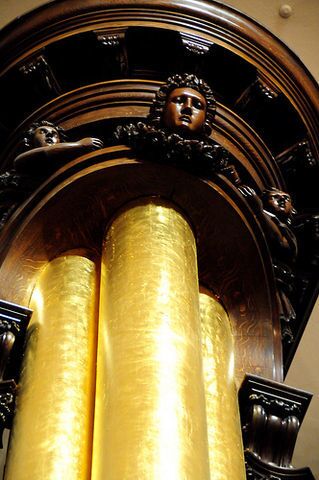We wanted to reshare this article in celebration of the 150th anniversary of the first time the Salt Lake Tabernacle was used for general conference!
As one of the most iconic and aesthetically unique buildings on Temple Square next to the temple itself, the Tabernacle has long held a place in Latter-day Saint heritage. Home of the Tabernacle Choir on Temple Square and the gathering place for general conference for 150 years, the Tabernacle was extensively renovated from 2005-2007 to preserve its history and extend its life. Many people are familiar with the structure, but few know about some of the fascinating details and stories behind its construction and role in early Church history.
Structure
1. The current Tabernacle was based on a concept for a canvas tabernacle that was going to be built near the Nauvoo Temple to accommodate the thousands who came to listen to the Prophet speak. However, as persecution increased, the canvas tabernacle was abandoned and materials for it were used to outfit wagons going west with the Saints instead.
2. A large fountain was installed in the middle of the room from 1875 to the mid-1880s. The fountain was surrounded by four statues of lions and was intended to cool Tabernacle occupants down and make them more comfortable during gatherings.
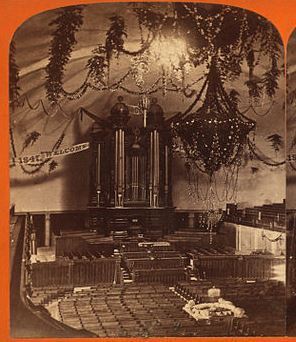
The Tabernacle decorated for Pioneer Day. If you look in the center, below the chandelier, you will notice the fountain.
3. The Tabernacle pillars are made of red sandstone, which was quarried from local Red Butte Canyon.
4. A baptistery was installed in the basement of the Tabernacle in 1890, but it was removed as part of renovation work during 2005-2007.
5. Three talented Latter-day Saint architects were commissioned to work on different parts of the Tabernacle: Truman Angell, the Salt Lake Temple architect, William Folsom, the Manti Temple architect, and Henry Grow, a civil engineer and experienced bridge builder.
6. The Tabernacle was purposely built on the same east-west axis as the Salt Lake Temple to show its significance in the Saints’ worship.
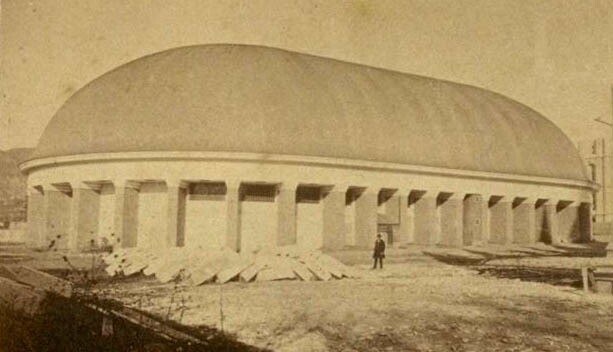
An outdoor view of the Tabernacle in the 1870s. If you look carefully in the background, you may notice the rising walls of the unfinished Salt Lake Temple to the east.
7. The Tabernacle has been awarded the title of a National Historic Landmark as well as a National Historic Civil Engineering Landmark. Other projects to receive this title include the Golden Gate Bridge and the Panama Canal.
8. The Tabernacle was first used eight years before it was officially finished and dedicated. It was used for October 1867 conference and was dedicated for use at that time by Brigham Young. When it was completed in October 1875, John Taylor gave the official dedication.
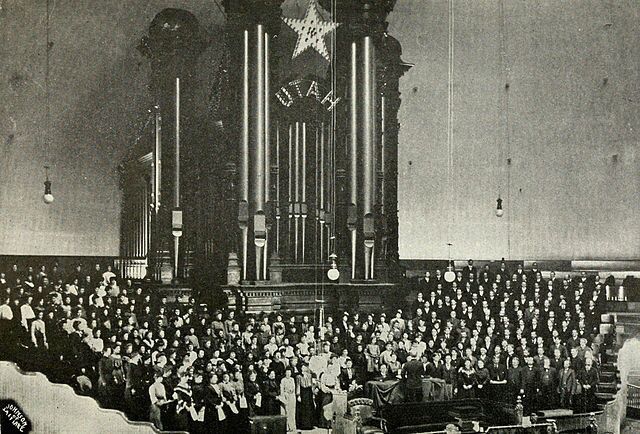
The Mormon Tabernacle Choir sings in front of the small, original Tabernacle organ celebrating Utah's statehood in 1896.
9. The Tabernacle was one of the first structures in Utah to be equipped with electric lighting.
10. The original wooden latticework of the roof still stands. It was, however, reinforced with steel to help keep the building safe while still preserving the original craftsmanship.
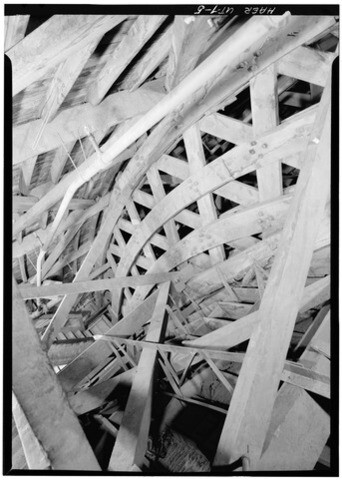
An inside perspective of the latticework of planks inside the roof of the Tabernacle, looking down.
11. The roof of the Tabernacle is nine feet thick.
12. 1,000 seats were eliminated during renovations when legroom between benches was increased from 9 inches to 14 inches. This was done because the building no longer needed to have maximum seating capacity, due to the construction of the Conference Center.
Construction Materials
13. Ox shoes were recycled and used for nails and washers when constructing the wooden latticework inside the roof. Items like steel and wood were scarce, so many parts of the Tabernacle were made of recycled materials.
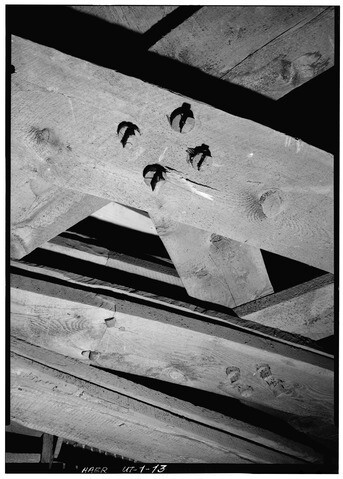
An up-close perspective of the wooden pegs and joints held together with washers made of recycled ox shoes.
14. Over 400,000 individual wooden shingles were used to build the first roof of the Tabernacle and which were later replaced by tin roofing. In 1947, the roof was replaced with the aluminum we are familiar with today.
15. Hair from animals such as horses and cows were added to the plaster to give it extra strength.
16. 1,500,000 board feet of timber were used in the construction of the Tabernacle.
17. Nails were scarce, so rawhide and wooden pegs were largely used to bind the wooden planks that made up the roof structure.
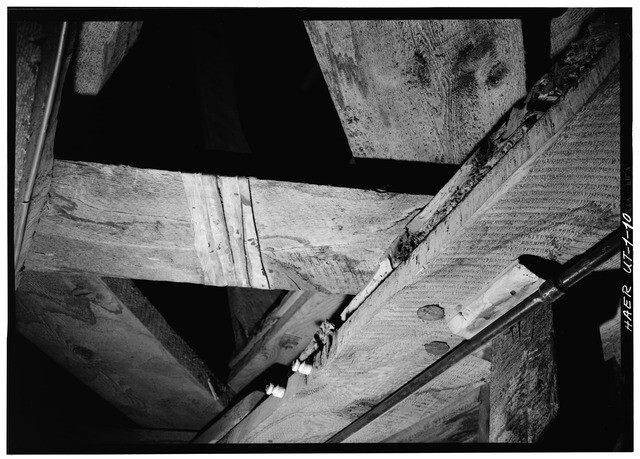
A view of the wooden trusses of the Tabernacle roof. The white stripes in the center of the board are pieces of rawhide, wrapped around weak boards to stabilize the structure.
18. The benches in the Tabernacle were originally made from white pine, stained to look like the more expensive oak wood not available to the early pioneers. These pine benches were replaced with actual oak ones during the building’s renovations.
Organ
19. There are 11,623 total pipes in the organ today. Several of the original 700 pipes are still part of the organ today.
20. The visible pipes are made out of wood, not metal. Unlike many organ pipes, the Tabernacle’s organ pipes were made of white Ponderosa pine.
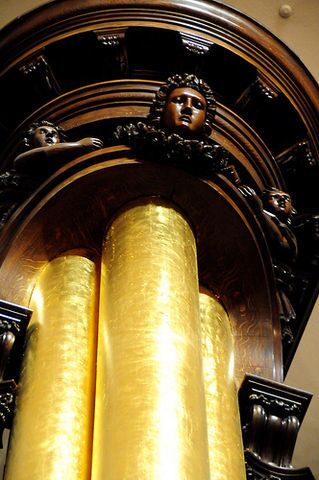
An image of an angel carved at the top of the Tabernacle organ casing.
21. The visible wooden pipes of the organ were originally painted gold. Later they were covered with imitation gold leafing, and, during renovations, they were at last covered with real gold leaf to give them their shiny, trademark look.
22. The organ was originally run by five men pumping bellows, and later by a waterwheel in the basement. Today, it is run by electricity.
Building Uses
23. The Utah Symphony was first housed in the Tabernacle until Abravanel Hall was built across the street in 1979.
24. The Tabernacle used to host weekly sacrament meetings and regular general conferences, as well as cultural and community events.
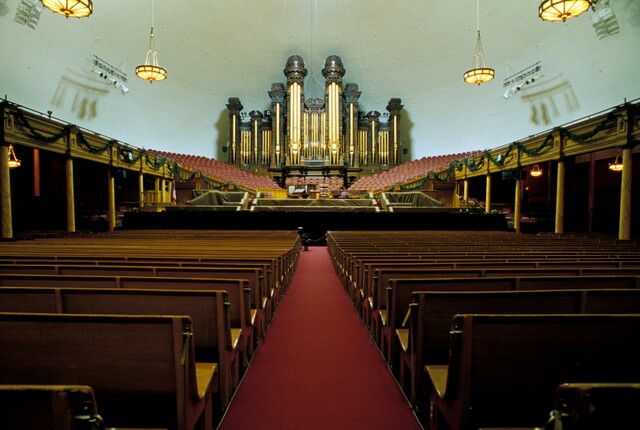
25. For nearly 100 uninterrupted years, daily organ recitals were given in the Tabernacle. Though they were discontinued during renovations, these recitals were resumed when the building was rededicated and still happen regularly to this day.
All images, unless otherwise indicated, from Wikimedia Commons.
